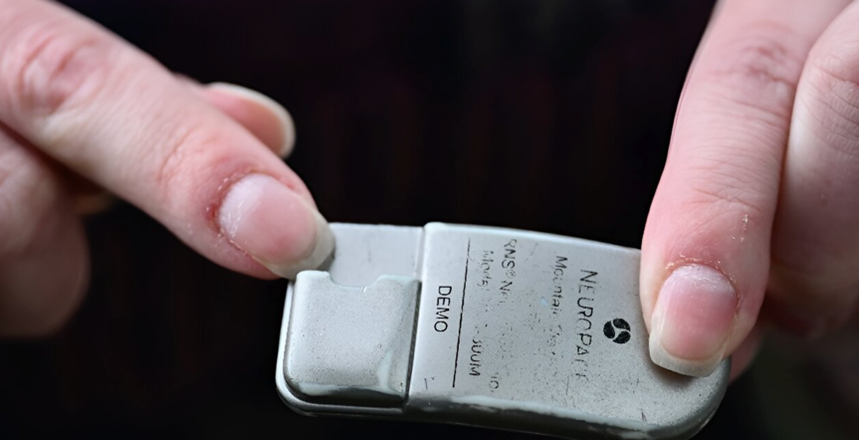No, not Musk’s mysterious patient.
When Elon Musk announced the successful implantation of a chip into a subject’s brain on 30 January, it was refreshingly unencumbered by details or information.
The first human received an implant from @Neuralink yesterday and is recovering well.
— Elon Musk (@elonmusk) January 29, 2024
Initial results show promising neuron spike detection.
It was nonetheless greeted with breathless headlines like Can Musk’s brain technology change the world?
This meme your scribe found last week sums it all up pretty perfectly:

Whether the recipient is now able to order an Uber with their thoughts alone, or whether the tech will ultimately achieve Musk’s more Messianic ambitions to make the blind to see and the lame to walk, is yet to be revealed.

The Neuralink chip
So are any repercussions Neuralink might face for the large number of animals killed in its rush for results.
What the news has done is tweak public and media interest in other forms of brain stimulation – ones with concrete goals and results, such as this case study published in Neuron late last year on a brain surgery experiment that began in 2019.
Amber Pearson is a young American woman who used to have debilitating obsessive-compulsive disorder that defied medication and therapy. Her compulsive behaviours were taking up as much as eight hours of her day; she would wash her hands until they were raw and bleeding; she was so fearful of contaminated food that she could not eat next to anyone.
When she developed severe epilepsy and her doctors sought deep brain stimulation treatment, she wondered whether the implanted device could help with her OCD as well.
A team from Oregon Health & Science University took up the challenge of pinpointing the brain regions responsible for her OCD behaviours and targeting them with electrical impulses in response to triggers coming from within the brain. This responsive aspect is what separates Pearson’s device – made by NeuroPace – from traditional DBS, which provides constant stimulation.

The less cool-looking NeuroPace chip
The area targeted for controlling the epilepsy was Pearson’s insula, where the seizures were occurring, and the ventral striatum, which contains a structure associated with compulsive urges, the nucleus accumbens.
They identified the brain signals associated with the onset of an OCD episode by having Pearson swipe a magnet over her head any time she felt obsessive thoughts coming on, and also in the lab, by making her handle seafood – one of her triggers – and watching what lit up.
They found a signature spike in activity in the ventral striatum, and programmed the device to respond to it. When and only when it received this signal the device would deliver electrical stimulation for a brief time and then stop.
The effects were not instantaneous, but over six to eight months Pearson’s compulsive behaviours decreased – from eight hours a day to 30 minutes – and her trigger was activated less often. Now she can eat with family and friends without feeling distress.
It’s the first time such a device has been used to control two conditions at once and the first time it’s been tried with OCD, the team says.
It’s also a confirmation of the physiological basis for OCD, one of the team told WIRED.
“What this highlights is that OCD is a disorder of the brain, just like epilepsy and Parkinson’s,” said Casey Halpern, Associate Professor of neurosurgery at Penn Medicine.
“This isn’t a disorder of will. There’s a pathological signal that we’re seeing in the brain.”
It’s a one-off so far, so it isn’t known how individual or generalisable the brain signals are.
And not too many people are unfortunate enough to have such severe and treatment-resistant OCD. But for this patient, the freedom she has regained sounds little short of miraculous.
Send stories the Messiah would be proud of to penny@medicalrepublic.com.au.


